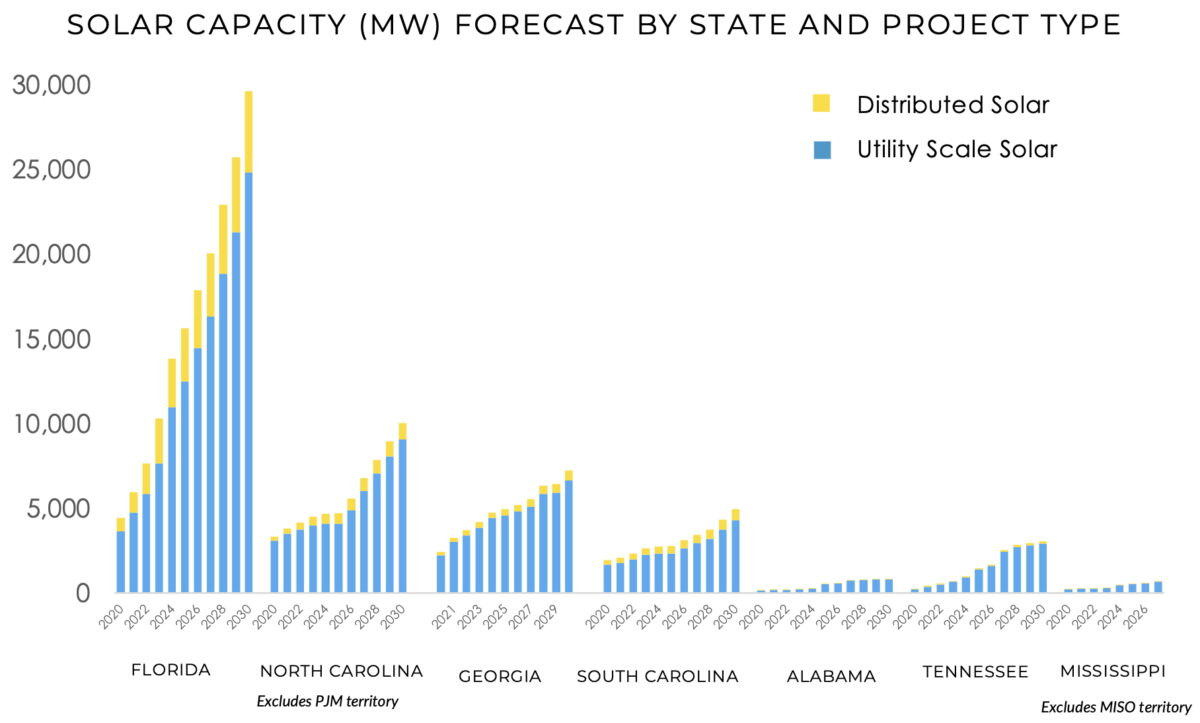Florida utility on pace to reach 93 GW solar, 50 GW storage by 2045
While utilities in neighboring states are “dabbling” with solar, Florida Power & Light is combining solar and storage as a “workhorse” technology, said a nonprofit executive.
November 3, 2025 William Driscoll

Image: SACE
Share
    
When a utility’s leadership embraces solar and storage, they can “move mountains” with state regulators and “the politics of it all” to deploy the technologies at pace and scale, said Stephen Smith, executive director of the Southern Alliance for Clean Energy.
Smith was describing the success of Florida Power & Light, saying on a SACE webinar that the utility has “the most ambitious solar deployment program of any utility in the Southeast by far.”
FPL is “actually on pace” to meet its plan to deploy 93 GW of solar and 50 GW of storage by 2045, and is moving away from fossil gas, Smith said. “We applaud that level of ambition because it’s tied to the seriousness of the crisis we’re up against, with climate change and climate disruption.”
Smith had opened his remarks with thoughts for the people in Jamaica and Cuba suffering “devastation” from Hurricane Melissa, noting the “amazing strength and ferocity of that storm.”
In its webinar, SACE presented its “ Solar in the Southeast” report on solar deployment to date and future plans across sevenSoutheastern states, as illustrated in the featured image above.
Utilities added 5 GW of solar across the Southeast last year, SACE reported. The organization projected future solar deployment based on integrated resource plans that utilities must file with state regulators.
Southeast utilities besides FPL have a bias “toward burning stuff” and “against solar,” Smith said. “We’ve seen some utility leaders continuing to play this card of saying solar is intermittent, as if they’d never heard of storage, and they act as if solar and storage aren’t being coupled to overcome that.” He said other utilities are “still dabbling” with solar and are “a little uncertain about it.”
SACE engages in discussions across the Southeast in state legislatures and regulatory commissions to communicate that “solar and storage are least-cost to build, and they’re quick to build,” said SACE Research Director Maggie Shober.
In its report, SACE gave a nod to Georgia Power, which recently made larger solar deployments in shorter time frames than it had previously, and is accelerating its deployment of storage.
The member-owned cooperative utility North Carolina Electric also earned kudos, as it owns and operates many small battery energy storage projects paired with solar. Cooperative and municipal utilities serve one-quarter of the region’s customers.
Rooftop solar
Distributed solar deployment, shown in yellow in the image above, has been modest across the region.
Shobersaid “utilities are inherently against customer-based solar just because it’s not in their financial interest to encourage it, so they’re setting up as many roadblocks as they can.” SACE continues to advocate for solar at all levels, she said.
Customers pay
Investor-owned utilities in the region are “leaning toward natural gas in most scenarios to meet the load growth demand for data centers,” Shober said.
Stacey Washington, SACE’s clean energy and equity director, noted that the fuel cost for running natural gas plants is passed on directly to customers in their bills, so utilities “generally don’t have to consider whether the price of gas will increase in the future, because they’re not going to be paying for the fuel.”
She said that “one way to move the needle towards solar and storage” would be to require utilities to pay a greater share of the fuel costs.
pv-magazine-usa.com |





